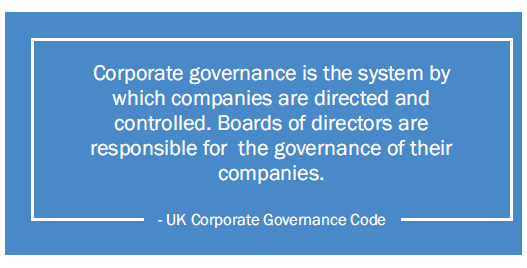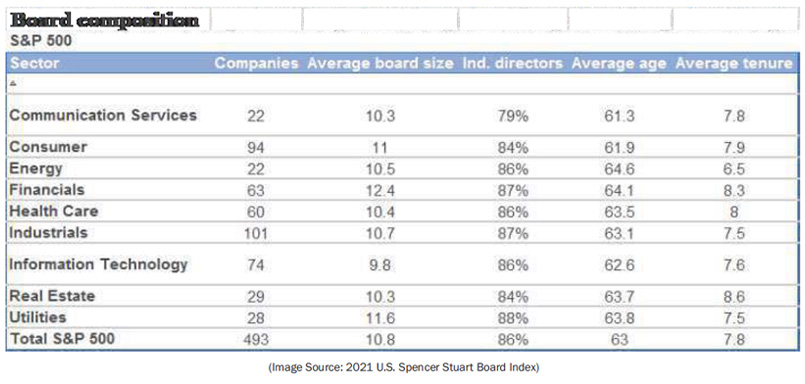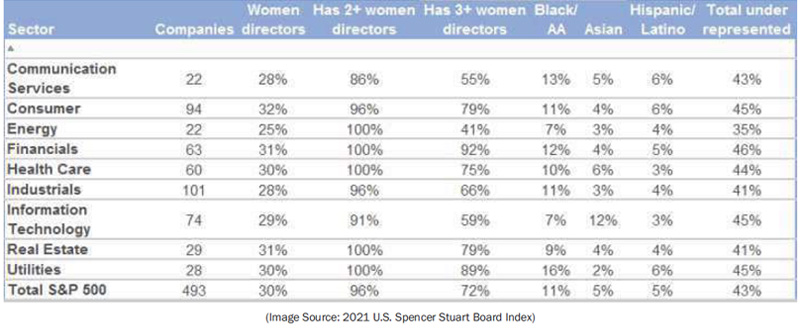 Connect Us
Connect Us

 Nov 01, 2022
Nov 01, 2022
Over the last decade, to improve corporate governance, increasing gender diversity has been an important issue for board rooms and Suites across the world. Demand for ethnic and racial diversity in boards, to make them true representative sample sets for stakeholders they serve, is increasing day by day. Also, Inclusion and Equity in companies are being determined by the number of independent directors that serve on their boards. This article broadly outlines the evolution of corporate governance and the impact of diversity on it.
The Origin of Corporate Governance
Ever since the corporate form with limited liability emerged, the problems of corporate governance made their way into corporations. Most researchers and academicians agree, Corporate Governance was not viewed seriously before 1930s.
The term, “Corporate Governance”, initiated in Federal Register in US in 1976. Coining of the term allowed the regulators and companies to begin defining and quantifying the benchmarks for the structured boards and best practices to be followed. It was first evidenced at NYSE where listed companies were required to incorporate an audit committee to their board, the members of which must be Independent Non-Executive Directors (INEDs). Every substantial financial crisis that hit economies after that has invariably shaped the Corporate Governance structures we see today.
A board with namesake diversity and members related to families of owners or associated with owners, are likely to fall into the ‘Group Think’ trap. A diverse board with adequate independent directors is less likely to fall into ‘Group Think’.

Corporate Governance reforms reached India in late 1990s and were primarily focused at making Audit Committees and Boards more independent, focused and powerful supervisors of management as well as aiding shareholders in supervising management. These reforms were driven through different paths with both the Ministry of Corporate Affairs (MCA) and the Securities and Exchange Board of India (SEBI) playing vital roles.
On May 07, 1999, SEBI constituted a committee under Mr. Kumar Mangalam Birla, member of SEBI Board, to promote and raise the standards of good corporate governance in the Indian companies. The report submitted by the committee was the first formal and comprehensive attempt to evolve a Corporate Governance Code. Its primary objective was to view corporate governance from the perspective of the investors and shareholders and to prepare a 'Code' that suited the Indian corporate environment. Since then, a lot of changes have taken place in rules and regulations with regards to the Corporate Governance in India.
Evolution of Corporate Governance
A normal corporate structure can be represented in the following way: -

Shareholders of companies elect the board of directors to protect their interests and investments. The Board in turn appoints the management team to take operational responsibility of the company. The management team periodically reports to the board about the performance of the company for further evaluation and direction. The primary objective of a company is long term growth and sustainability. The responsibility of board is three fold –
1) Internal Focus–
a. Establishing objectives, policies and procedures
b. Internal Risk assessment and mitigation
c. Appointment and monitoring of Management team
2) External focus –
a. Accountable to all stakeholders
b. External Risk Management
c. Competitiveness in global as well as local environment
d. Regulatory compliance
3) Future focus –
a. Alignment of goals with long term vision
b. Capacity building and strategy development
c. Sustainability and value creation
Initially, during the 1970s, focus was on solving the corporate governance problems due to unavailability of standards or “Code”. Different models like joint stock limited liability company were being used by family firms and other private companies even though it was predominantly used for public enterprises. Also, adopting two tier boards (German model), which had separate supervisory board with independent directors and Executive board with executive directors, instead of unitary board (Anglo American model) was also gaining importance. Additionally, impetus was on companies to be socially responsible towards all the stakeholders.
During the 1980s, economic policies focused on increasing shareholder value in US & UK because of re-privatization of major state owned entities – coal, electricity, gas, railways and water. As a result, boards of listed companies in US came under pressure from their institutional investors, demanding better performance and long term strategic information. On account of increasing fraudulent reporting cases, boards dominated by powerful executive directors seemed to need checks and balances through strong independent directors.
During the 1990s, major codes and standards for Corporate Governance and best business practices were created. The first corporate governance code was the Cadbury Report (1992) in the UK, produced by a committee chaired by Sir Adrian Cadbury.
The code covered the governance of public listed companies. It was followed by a series of codes to be adopted in other developed and developing countries as well.
The dawn of the 21st century brought a new spotlight on Corporate Governance with focus now on director appraisal, training and development and for board level performance reviews. With a lot of major companies like Enron, Marconi, Parmalat, Worldcom, Tyco etc. facing governance issues, additional protection was given to protect the shareholders of public companies through revised codes of corporate governance.
The global financial crisis 2008, raised fundamental corporate governance issues, including exposure to risk. US government adopted a comprehensive and demanding regulation of the financial sector, demanding higher accountability and transparency. The Securities and Exchange Commission (SEC) called for all public companies to create board level committees to consider their companies' exposure to risk.
In 2015, G20 joined OECD to promote revised principles of corporate governance (OECD 2004) meant to help countries develop their own corporate governance codes. Previously, in 2010, the UK Davies Review called for an increase in the number of women in leadership positions of FTSE 350 companies, setting a target of 33 per cent women on their boards by 2020. In 2016, the UK government implemented the European Union Directive on disclosure of non-financial information and diversity statistics for large companies. UK Corporate Governance Code 2018, called for companies to create a corporate culture aligned with the company strategy, promoting integrity and valuing diversity. Financial Review Committee (FRC) called for diverse boards which would have the right mix of skills and experience and promoted diversity.
Gradually, Diversity, Equity and Inclusion (DEI) has started gaining importance in the Corporate Governance perspective especially due to the impact of Black Lives Matter, Me Too and Stop AAPI Hate movements, trickling down into the professional world
Diversity, Equity & Inclusion: Corporate Governance perspective
Diversity from a corporate governance perspective has been envisaged till now with respect to gender, ethnicity, race, skills or expertise and minority representation. Of these the major factors considered for creating a diverse board are – Gender, minority representation and race.
Equity aims to ensure the fair treatment, access, equality of opportunity and advancement for everyone while also attempting to identify and remove the barriers that have prevented some groups from representation. Equity promotes justice, fairness and impartiality within the processes, procedures and distribution of resources by systems or institutions. To tackle equity, people need to understand the root causes of outcome disparities in society.
Inclusion entails creating a culture where every participant can contribute effectively and fearlessly without any barrier, discrimination or intolerance.

‘Diversity Matters' 2014, a research by McKinsey & Company, revealed that companies in the top quartile of gender diversity were 15% more likely to have financial returns above the national industry median. Companies in the top quartile of racial/ethnic diversity were 35 percent more likely to have financial returns above the national industry median. The most important factors identified were advantages in recruiting the best talent, stronger customer orientation, increased employee satisfaction and improved decision making. Whereas companies in the bottom quartile for both gender and ethnicity/race were statistically less likely to achieve above average financial returns than the average companies in the dataset.
In 'Diversity Wins' 2019, McKinsey & Company, found that companies in the top quartile of gender diversity on executive teams were 25 percent more likely to experience above average profitability than peer companies in the fourth quartile. It shows that increasing gender diversity in boards had positive impact on the top and bottom lines of the companies.
Types of Diversity
Diversity can be broadly classified into two types –
1. Surface Level
Surface level diversity consists of attributes of board directors that are observable and non-observable.
Observable diversity comprises of attributes of directors that can be easily determined or are visible e.g., Gender, Age, Region, Tenure, Race, Ethnicity, Community, Class and Religion.
Non-observable diversity encompasses attributes that are less visible e.g. educational qualifications, expertise and experience. Board members with multidisciplinary or cross functional experience can take a more comprehensive approach to problem solving. They can look at the problems with different perspectives which leads to creative problem solving and innovative decision making.
2. Deep level
Deep level diversity is concerned with personality diversity, including cognitive features perceptions, values, and personal characteristics.
The personality of an individual is framed by his or her attitudes, attributes, social endowment, and skills. People differ not only in their interests and skills but also in the way they perceive, their reactions, values, motivations, and the way they interact and derive conclusions.
Benefits of board diversity
The improved overall performance of firms with more diverse boards may be attributed to the following:
1. Better Understanding of Customer Orientation
In a global and highly connected economy, a board with gender, race and functional expertise will likely best represent its diverse customer base and better understand the evolving needs of the business. It would allow for more matured problem solving in complex and diverse markets.
2. Higher Employee Satisfaction
When boards have adequate minority representation, it helps develop an organizational culture of inclusivity. In turn, this creates a liberal environment where employees would feel free contribute with innovative ideas and creative solutions, which would ultimately lead to increased self-confidence and higher self-esteem.
3. Preventing 'Group Think'
A board with namesake diversity and members related to families of owners or associated with owners, are likely to fall into the 'Group Think' trap. A diverse board with adequate independent directors is less likely to fall into “groupthink”. It is best described as the tendency for a group to take decisions because its members aligned themselves with one other, insulating themselves from different viewpoints.
A diverse board would have independent directors with differing views, convictions and skill sets that would offer multifaceted perspectives which could lead to better decision making. The level of diversity would depend on the complexity in making the business decisions.
Disadvantages of board diversity
Diversity could also prove to be double edged sword. Some of the shortcomings of having diversified boards could be -
1. Isolated functioning: Less Effective Interpersonal Dynamics
With surface level diversity in boards, directors would have to deal with more varied perspectives, biases, and personal experiences. It may lead to slower decision making processes, which could negatively impact the company in instances when immediate action and responses are required to be taken.
2. Reduced Trust Among Board Members
When the board is constituted of family members or known associates, there is more trust among its members. Diverse boards would have to nurture and build higher trust levels. Differentiated trust and value issues often lead to disruption, conflict, and inefficiencies and poor decision making.
3. Reduced competitiveness with several board memberships
In order to make boards diverse it is important to have adequate representation of independent directors who would participate with external viewpoints effectively during boardroom discussions. When an independent director is also a part of multiple boards across various companies, the competitive advantage that the director brings to the table diminishes.
4. Inadequate diversity representation in board
Lot of studies have been conducted in relation to impact of diversity level on the performance of the board. A study by Bank of America (BofA) Global research suggests that S&P500 companies which had more women in management positions than median saw 30% higher ROE, as well as 30% lower earnings risk. Also, S&P500 companies with more women on boards than the median, saw 15% higher ROE as well as 50% reduction in earnings risk in a year. Companies having above average ethnic and racial diversity among employees saw a 8% higher ROE one year out, as compared to less diverse peers. It also means that if adequate diversity is not maintained across the board then it may not have the desired impact on the performance of the company.

It can be observed that most of firms on an average have more than 80% Independent directors.

The gender, ethnic and racial diversity in the boards of S&P500 companies can be seen in the table above.
Need for Diversity
Historically, it has been observed that the problems in Corporate Governance have been generally caused due to board structures that constituted like minded individuals with similar functional expertise, very few independent directors, no gender diversity and non minority representation. With exponential growth in companies adopting latest technologies and undergoing transformations involving digitalization, automation and implementation of AI (Big Data), the parameters for being competitive in global business environment have drastically changed. The disruption in traditional ways of conducting business brought by digitalization has compelled the directors to either get trained to effectively tackle the problems of digital age or simply be left out of the race. Digitalization has also brought the world closer to the extent that companies can now have virtual existence anywhere on the earth.
Apart from the regular rationale given for having a diverse board like – Fostering innovation and creative problem solving, better talent acquisition and employee relationships, comprehensive understanding of business marketplace, access to varied resources and networks and enhancing reputation of the company, a new rationale of ability to quickly adapt to VUCA world is gaining importance. Getting certified with latest technologies will define the competitive advantage of boards going forward.
Dynamic diversity which allows the board of a company to restructure its constitution to find immediate solutions to the external as well as internal challenges will drive the selection of directors in future.
Diversity: Post-Pandemic Impact
The post-COVID environment has been extremely challenging for companies to deal with not only in terms of getting back to pre COVID operating levels but also dealing with uncertainties reined in by changing global economic scenarios, geo political crises, and increased consideration for value of human life.
Special impor tance has been placed on rewarding Environmental, Social and Governance (ESG) related efforts taken by companies towards long term sustainability in this post COVID VUCA (Volatile, Uncertain, Complex and Ambiguous) world. Even though, other topics like Diversity, Equity and Inclusion have always been important to people, businesses and communities, this pandemic has highlighted them again. Companies have started acknowledging the fact that the true representation of the society they cater to should also be visible throughout their businesses.
A record 5.4 million applications were filed to form new businesses in 2021 based on data from the U.S. Census Bureau's Business Formation Statistics. India has over 61,400 startups recognized by the Department for Promotion of Industry and Internal Trade (DPIIT), with at least 14,000 recognized during FY 2022, according to the Economic Survey 2021-22.
In a startup, the board selection should be such that diverse perspectives like management, domain, investor/finance, governance/legal and independent industry expertise are adequately represented. However, more important attributes required would be right temperament, maturity, wisdom, insight, ability to listen and contribute appropriately.
In partnership with Pitchbook, J.P. Morgan has released a firstof its kind benchmarking study on gender diversity in startup boardrooms, which suggests that CEOs, founders and investors within the startup ecosystem have not made boardroom diversity a visible priority. Only 22% of all new board appointments at startups that have been women, YTD 2021, is half the rate of public companies. Startups on average have spent 7 years since inception before adding the first female board director.
Indian Perspective
Being one of the most populous countries in the world, India has the most diverse population in terms of Race and ethnicity, Sexual orientation, Socioeconomic status, Gender identity, Religion, Language, Age, Marital status, Mental ability, Physical ability, People with disabilities etc. Apart from the abovementioned regular categorizations of diversity, India also has differentiation based on caste, creed, income, job type and tribes.
In India, being the largest democracy in the world, it is very difficult to balance the diversity, equity and inclusion principles. To reduce the gender bias and improve the participation of women in professional spheres, Government of India, through the Companies Act 2013, made it compulsory for all publicly listed firms to have at least one woman director. In a study conducted by HBR (Harvard Business Review) on compliance choices of NIFTY500 firms from 2013 onwards, it was observed that 303 firms (60.6%) that had 3320 directors, between 2013 - 2017, had no women in 2013. By 2017, 82.8% of previously non-compliant firms had appointed a woman to their board whereas 13.6% of these firms had two or more women to the board. It was surprising that most boards fulfilled the mandatory requirement by appointing women as independent directors to a previously all male board in 70.4% of the cases. Even though the female directors were considerably more educated and with more political experience, they were less likely to be a part of board committees. By sidelining new independent female board members from the more influential board committees, predominantly male boards were able to limit the extent of actual governance reform in their internal board processes.
The Future
The Artificial Intelligence, since its inception, has grown exponentially, spreading its roots deeply into the systems and processes of companies adopting digitalization and increasingly transforming business processes and strategies across industry sectors. PWC reports, globally, investment in AI technology will be USD 15.7 trillion by 2030. McKinsey Global Institute, in a survey of more than 3000 AI aware companies in the world, found that “early AI adopters that combine strong digital capability with proactive strategies have higher profit margins and expect the performance gap with other firms to widen in the next three years.”
There are several ways AI could be deployed by board directors and top managers of companies. AI can enhance the quality of information on which board resolutions are based. It could help in quicker and accurate M&A valuations through faster information collection and analysis, developing economic predictions for new business launches, predict best business strategies while bidding for auctioned projects and monitoring
business performance and developing financial forecasts. AI Algorithms could significantly improve internal assessment, balance sheet quality, capital adequacy and risk exposure in companies and help directors in forecasting business risks through advanced risk management tools. AI can also help track and monitor market trends, competitor performance and industry benchmarks as well as identify potential markets for expansion.
Salesforce CEO Marc Benioff utilizes the data driven analysis of AI in corporate governance, through an unreleased version of company's AI product, Einstein. Einstein provides Benioff with data driven analysis of quarter performance, strengths, weaknesses, and specific executives that may need close attention.

The rapid success of AI assistants in simplifying complex business decisions is propelling them into boardrooms around the globe. Venture capitalist fund, Deep Knowledge Ventures attributes their AI board member, Vital (Validating Investment Tool for Advancing Life Sciences), for advising them against a potentially catastrophic decision.
In a few years with advanced technologies, AI may be able to study specific human behavioral patterns in decision making and replicate them based on specific triggers. It will help generate a repository of different profiles based on surface level diversity and co-relate the attributes with personas formed based on their decision making.
A board completely based on personas developed by AI would have legal and ethical ramifications. As of now, laws mandate that the directors be human beings or natural persons as the decision making process involves conscience. Also, if the board decisions were taken by AI bots, it is difficult to predict the legal and ethical liability of AI towards compensation given for damages caused by those decisions. Since AI only exists in digital world and not in the physical world the transcendence of AI may provide the solution to the problem. In near future, however, it is highly unlikely for AI to completely replace board of directors.
The concept of Corporate Governance, which started from a joint stock limited liability problem, has evolved exceptionally well over centuries. As in every life cycle of a firm – introduction stage is followed by growth, which is followed by maturity, which is ultimately followed by decline or diversification, evolution of corporate governance has reached the stage of diversification which will lead to a new form of governance altogether. Diversity will become a competitive advantage in the near future.
Disclaimer: The views and opinions expressed in this article are those of the author alone and do not necessarily reflect the position of any other agency, organisation, employer or company. These views are subject to change, revision and rethinking at any time. Please do not hold us to them in perpetuity.

He is the Managing Director of Century Textiles and Industries Ltd., Aditya Birla Group.
Owned by: Institute of Directors, India
Disclaimer: The opinions expressed in the articles/ stories are the personal opinions of the author. IOD/ Editor is not responsible for the accuracy, completeness, suitability, or validity of any information in those articles. The information, facts or opinions expressed in the articles/ speeches do not reflect the views of IOD/ Editor and IOD/ Editor does not assume any responsibility or liability for the same.
About Publisher

Bringing a Silent Revolution through the Boardroom
Institute of Directors (IOD) is an apex national association of Corporate Directors under the India's 'Societies Registration Act XXI of 1860'. Currently it is associated with over 30,000 senior executives from Govt, PSU and Private organizations of India and abroad.
View All BlogsMasterclass for Directors
Categories